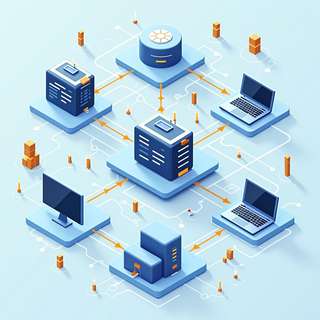Les API
APIs, or Application Programming Interfaces, have become critical in modern software development, enabling systems and applications to communicate and interact with one another. Historically, APIs, such as the Windows API (WinAPI), were primarily designed for local interaction between software applications and the operating system, emphasizing direct calls within a local environment. As the internet evolved, the concept of APIs expanded to include web APIs, which allow disparate systems to communicate over the web via standard protocols like HTTP. This shift from decentralized APIs to centralized web APIs revolutionized how developers connect applications, facilitating a wide range of integrations and interactions over the internet.
One important point to discuss is the evolution of API architecture. Decentralized APIs were often tied to specific platforms or operating systems, limiting their accessibility and interoperability. In contrast, web APIs have adopted more standardized protocols, such as REST and SOAP, and data formats like JSON and XML, fostering cross-platform and cross-language compatibility. This standardization has contributed to the rapid growth of web services and cloud computing, allowing developers to easily integrate multiple services and create comprehensive applications that utilize resources from different providers.
Furthermore, the trend toward centralization in web APIs can be attributed to the rise of cloud computing and the need for scalability and reliability. Centralized APIs, often offered by major tech companies, provide developers with robust, managed services that abstract the complexities of backend infrastructure. This shift has led to increased dependency on third-party services, but it has also raised critical discussions about data security, privacy, and control. As organizations leverage centralized APIs for their applications, concerns about vendor lock-in and the sustainability of using centralized platforms have emerged.
In summary, the transition from decentralized APIs like WinAPI to centralized web APIs marks a pivotal development in software architecture. By simplifying integration and promoting interoperability, web APIs have transformed how developers build applications. However, this centralization brings with it challenges, including dependency management, data governance, and considerations for future-proofing applications in an ever-evolving technological landscape. Understanding these dynamics is crucial for developers and organizations as they navigate the complexities of modern development practices.


Commentaires